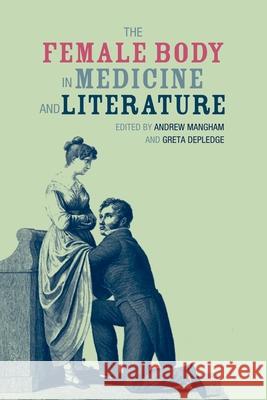The Female Body in Medicine and Literature » książka
The Female Body in Medicine and Literature
ISBN-13: 9781846318528 / Angielski / Miękka / 2012 / 231 str.
The Female Body in Medicine and Literature features essays that explore literary texts in relation to the history of gynaecology and women's surgery. Gender studies and feminist approaches to literature have become busy and enlightening fields of enquiry in recent times, yet there remains no single work that fully analyses the impact of women's surgery on literary production or, conversely, ways in which literary trends have shaped the course of gynaecology and other branches of women's medicine. This book will demonstrate how fiction and medicine have a long-established tradition of looking towards each other for inspiration and elucidation in questions of gender. Medical textbooks and pamphlets have consistently cited fictional plots and characterisations as a way of communicating complex or 'sensitive' ideas. Essays explore historical accounts of clinical procedures, the relationship between gynaecology and psychology, and cultural conceptions of motherhood, fertility, and the female organisation through a broad range of texts including Henry More's Pre-Existency of the Soul (1659), Charlotte Bronte's Villette (1855), and Eve Ensler's Vagina Monologues (1998). The Female Body in Medicine and Literature raises important theoretical questions on the relationship between popular culture, literature, and the growth of women's medicine and will be required reading for scholars in gender studies, literary studies and the history of medicine. This collection explores the complex intersections between literature and the medical treatment of women between 1600 and 2000. Employing a range of methodologies, it furthers our understanding of the development of women's medicine and comments on its wider cultural ramifications. Although there has been an increase in critical studies of women's medicine in recent years, this collection is a key contributor to that field because it draws together essays on a wide range of new topics from varying disciplines. It features, for instance, studies of motherhood, fertility, clinical procedure, and the relationship between gynaecology and psychology. Besides offering essays on subjects that have received a lack of critical attention, the essays presented here are truly interdisciplinary; they explore the complex links between gynaecology, art, language, and philosophy, and underscore how popular art forms have served an important function in the formation of 'women's science' prior to the twenty-first century. This book also demonstrates how a number of high-profile controversies were taken up and reworked by novelists, philosophers, and historians. Focusing on the vexed and convoluted story of women's medicine, this volume offers new ways of thinking about gender, science, and the Western imagination.
"











